Design at Scale 2021- Achieving Balanced Design Consistency (Prerna Makanawala)
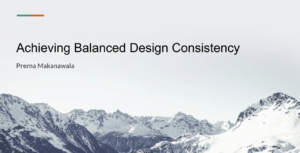
-
It’s even more challenging with acquisition and acquired products
-
How to approach consistency?
-
How to achieve balance between different design systems?
-
How to make recent acquisitions feel like they belong to same company?
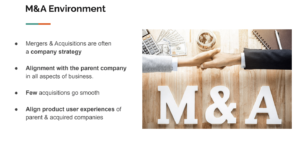
-
SAP had done 72 acquisitions over the course of its history
-
Palo Alto Networks has done 16 within past few years
-
But in many cases, things don’t go smoothly, as people have fear of unknown and delay their decision making
-
Key people often end up leaving the acquired company, due to a loss of control of their product
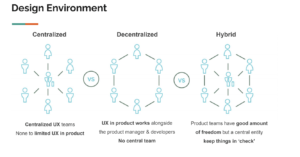
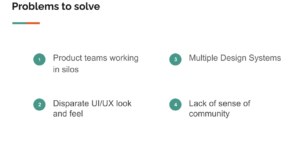
- Identify what needs to be solved, not “how” it’s going to be solved.
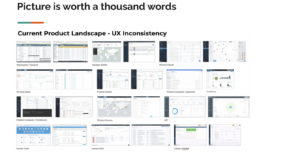
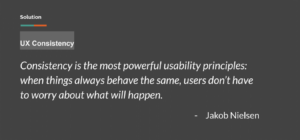
-
To accomplish something, you need consistency
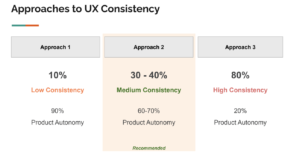
-
Design leaders can try to align everything, but the product could become too cookie-cutter, diminishing the product experience
-
See the example of CRM systems and HR systems having different functions and users
-
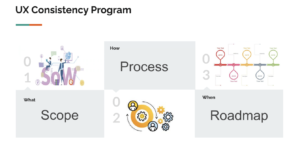
-
Example include UI elements, typography, and interaction flows
-
Create network groups, where designer from each product teams work collaboratively and come up with decision that works for all
-
Provide quarterly updates to leadership
-
Don’t just focus on finalizing designs before delivering to engineering
-
Promote and share the plan with everyone, from product management to engineering
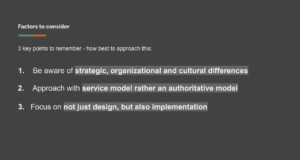
-
Can face one or all of these in environment (i.e. a team in a completely different country/ organizational re-orgs)
-
Be aware and be able pivot the project to make sure it works in those situations
-
Collaboration versus command-control
-
Focus on service leadership
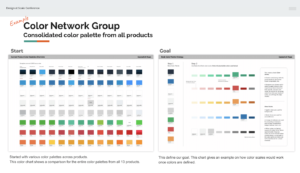
-
People shared needs and requirements
-
Combined all color palettes into one slide
-
Buttons looked similar, but were not quite the same
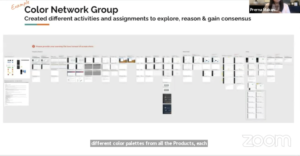
-
The team reviewed Palo Alto’s brand, competitors, and accessibility requirements
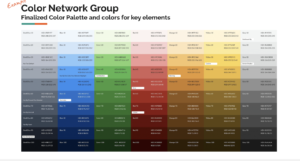
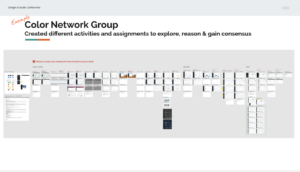
-
Still, many improvements remained

-
Breaking down silos between the design teams
-
Products started looking like they belong to the same company
-
Started forming a common design system
-
Helped build sense of a design community within the company
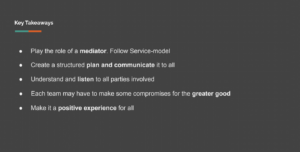
-
Be the role of a mediator, objective and fair.
-
Follow a Service model, to ensure win-win situation for all
-
Create a plan and communicate with all, not just design leads and designers. Make sure all stakeholders are aligned
-
Understand and listen. The process should be collaborative
-
Don’t alienate minority teams, and understand compromises that need to be made
-
-
Human capital and design talent is the most powerful asset
-
It needs to be empowered
-

Q&A
- Comment: We have moved from the use of the word “consistency,” as it fills too many folks with fear of cookie-cutter-ness… and instead use the word “continuity.” — thoughts/reactions?
—> “Continuity” works great, as other companies use like coherence. So long as goal is reached, call it what you want
2. Glad to hear about cultural differences! I guess the question is: how can we balance specific differences in cultures/user contexts when they’re not just role or geographical?
-
Cautious and needs to be aware of that
-
Innovation will bring inconsistency, so long as it adds more value to product, users, and customers
4. How do you get people who are wedded to their design system adopt a new one?
5. Regarding the business value, how do you measure success and show this value back to the rest of the company (aside from the screenshots)
-
Be willing to get creative in demonstrating cost savings without a common design
6. How are tracking and reporting on the success of a design system? This is really about tying ROI to design at scale.
-
Hard to show product leadership and value of design to companies
-
This is changing, since design is in a better space relative to 20 years ago, but working to define this further in the future
7. Do you have any comments about approaching an acquisition alignment process for a new acquisition after you have gone through this with the rest of the product portfolio?
—> You will need to put together an onboarding process for new companies that are acquired
8. Can you talk more about how you have you gotten people outside design engaged and maybe challenges?
-
Talking with them regularly and showing to them the importance of design and what they are doing
-
Product Management will decide what goes into the backlog and different levels of people
-
Contacting PMs and making sure they are addressing the back-log commitments
-
Communication is key
-
So long as things are moving in the right direction, things

